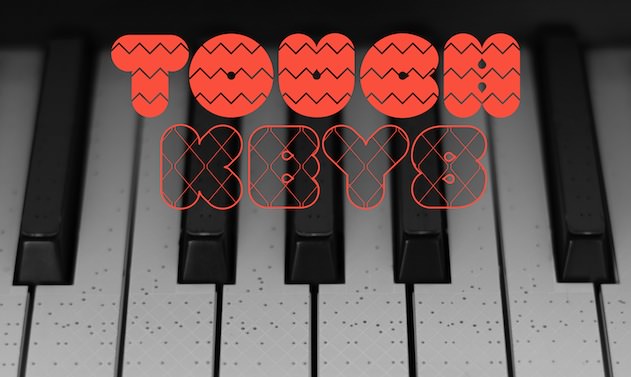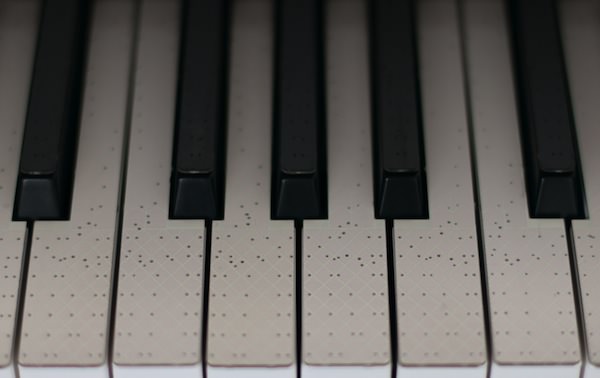A Kickstarter project seeks funding for an innovative new multi-touch keyboard technology.

A Kickstarter project has been launched for TouchKeys, an innovative approach to MIDI control which allows parameters to be controlled by the fingers’ horizontal and vertical position on each key. TouchKeys can be retro-fitted to keyboards or pianos, and the data can be transmitted by MIDI or OSC. The system is fully polyphonic, meaning that each note can be manipulated independently.
At the time of writing, 96 backers have pledged £15,498 of the projects £20,000 goal, with 24 days remaining.
We asked project leader Andrew McPherson of the Centre for Digital Music, Queen Mary University of London, a few questions to find out more about the project and discuss some of the potential uses for TouchKeys.
Attack: Most musical projects of this type seem to come from musicians looking to find solutions for themselves. Is that the case here? Do you want to tell us a little bit about the background of the project, what inspired it, and how you set about finding an answer?
Andrew McPherson: I’m a classical composer and a viola player. I studied the piano when I was younger and I use it for composition, but I don’t consider myself a pianist.
The TouchKeys developed out of an earlier instrument I created called the magnetic resonator piano (MRP for short). The MRP uses electromagnets inside an acoustic grand piano to elicit new sounds from the strings. The MRP makes it possible to continuously shape the sound of each note after it’s played, which generally can’t be done on a traditional acoustic piano. After building the MRP, I became very interested in ways that keyboard technique could be extended to allow the kinds of expressive effects that string and wind players routinely use: vibrato, pitch bends, timbre and volume changes, etc.
For example, you’ll sometimes see a pianist rock the finger back and forth on a key in slow passages, as if they’re playing vibrato on a string instrument. It doesn’t do anything on the traditional piano of course, but it’s a natural and intuitive gesture, and it’s one of the motions I set out to capture with the TouchKeys.
The system is potentially more expressive than aftertouch for various reasons, not least because it’s multi-touch capable. What kind of applications do you see for the multi-touch feature?
Multi-touch sensing was kind of a freebie with the particular sensor technology I used, so I thought it would be interesting to explore its applications. One option is to trigger different sounds when the key is struck with two fingers versus one (a sort of “compound instrument”). Another is to control different parameters when sliding with two fingers versus one (e.g. changing volume rather than pitch). I’ve also found that tapping fingers on the key surfaces can be done much more quickly than pressing the keys down. So if you want to retrigger the same note quickly and repeatedly, drumming multiple fingers on the key surface could be a useful technique.
You’ll sometimes see a pianist rock the finger back and forth on a key... it’s a natural and intuitive gesture.
TouchKeys is also, of course, fully polyphonic, limited only by the number of fingers on the keyboard. One of the reasons polyphonic aftertouch never really took off as a mainstream technology was the prohibitive cost. At £360 for the 25-key version or £660 pre-installed on a 25-key Novation Impulse, TouchKeys isn’t exactly cheap but it’s not outrageously expensive either. Is there potential for a manufacturer to exploit economies of scale here and license the technology for cheaper and more widespread use?
Polyphonic aftertouch is great, but there may be more than just cost keeping it out of the mainstream. I find that controlling key pressure (polyphonic or not) becomes quite physically tiring because it requires tension in the hand. The TouchKeys are capable of several independent dimensions of control on every key, but even if you use only one dimension, I find that sliding the fingers on the keys is more ergonomic than exerting force on them.
It’s true that the TouchKeys cost more than your usual entry-level keyboard. Some of this is the small-scale manufacturing, but the technology is also considerably more sophisticated, since the touch sensing is processed within each key itself. If the TouchKeys technology were released on the mass market tomorrow, it’s hard to say whether it would actually be cheaper. Probably not immediately: I suspect that for business reasons, a company would introduce it only on high-end keyboards first.
Also, if being a small university-driven project results in higher manufacturing costs, the upside is that we don’t have a retail markup, and we don’t need a big profit margin to support a business. Our goal for now is to get this instrument out there so people can start making music with it. We’ll worry about the mass market later!
Our goal for now is to get this instrument out there so people can start making music with it.
Are there also potentially non-keyboard applications for similar technology? Could you apply it to, for instance, a percussion instrument or the fretboard of a stringed instrument?
Interesting ideas! I’ve seen some research on adding position sensing to fretboards, and I think that’s quite promising. The applications would be different since the hands are used very differently on guitar and keyboard. But it’s something to look at down the line.
Find out more about TouchKeys at the project’s Kickstarter page.
